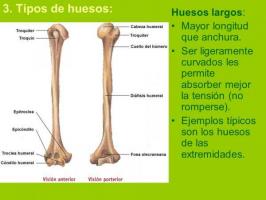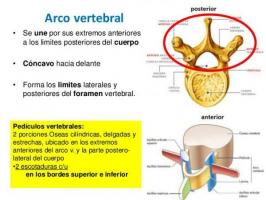What is ZOOPLANCTON: definition and examples

If we observe a sample of fresh or marine water collected from the natural environment under the microscope, we will observe that a multitude of small organisms. This set of tiny organisms is very diverse and is called plankton, which in Greek means wanderer or vagabond.
In this lesson from a TEACHER we are going to dive into the exploration of this community of aquatic organisms to discover what is zooplankton and know some examples of the organisms that are part of it.
Index
- What is plankton and what is its importance
- Zooplankton definition and classification
- How is zooplankton classified?
- Examples of zooplankton
What is plankton and what is its importance.
In a simple way we can define the plankton as a set of organisms that live suspended in the water column (They are not in contact with the bottom), without swimming capacity to counteract the currents of the aquatic environment. Most of them are microscopic or small organisms, although there are some exceptions.
This inability to swim is what differentiates plankton from others pelagic organisms (organisms that live in water without contact with the bottom), and that are part of another community of organisms known by the name of necton. The organisms that are part of the nekton have the ability to swim and are usually large organisms such as turtles, dolphins, whales and some fish.
Types of plankton
Plankton can be distributed at different depths. Based on this criterion, two types of plankton are distinguished:
- The photoplankton It is located in areas where sunlight penetrates, in the surface area of continental or marine water masses at depths between 1 and 30 meters.
- The bathypelagic plankton Instead, it is located in the twilight zone, at depths between 30 and 50 meters.
The composition of plankton is very diverse, it is made up of organisms in both larval and adult forms. Among the organisms that are part of this community we find eggs and larval forms of fish, crustaceans and other marine invertebrates, small animals such as copepods (microscopic crustaceans), single-celled algae such as cyanobacteria (prokaryotes), or diatoms (eukaryotes).
If we look at the type of metabolism exhibited by the different organisms that are part of the plankton It is made up of two elements:
- The phytoplankton: set of autotrophic organisms that form plankton.
- The zooplankton: set of heterotrophic organisms that form plankton.

Zooplankton definition and classification.
The zooplankton is the fraction of plankton that is made up of heterotrophic organisms, that is, organisms that obtain carbon and energy using other living organisms as food. Zooplankton is also colloquially called animal plankton and is made up of a community of very diverse organizations, in which there are representatives of all the divisions of invertebrates.
All the organisms that make up zooplankton have developed flotation mechanisms to avoid its sinking. The eggs of some fish contain blisters of fat that help them float (fat is less dense than water), other organisms, such as jellyfish, have extremely light bodies due to their high composition in water (95%) that allows them to float, in many other cases organisms present a large number of extensions.
Types of zooplankton
Depending on whether the organisms that are part of the plankton are part of it permanently or only temporarily, we distinguish two types of zooplankton:
- Holoplankton: formed by organisms that develop their entire life cycle as part of plankton. The most abundant holoplankton organisms are copepods.
- Meroplankton: formed by organisms that only develop part of their life cycle as members of plankton. This fraction of the zooplakton is made up of larvae and eggs of different types of organisms (fish, mollusks, crustaceans)

Image: Slideshare
How is zooplankton classified?
According to the size range of the organisms, zooplankton can be classified into different groups:
- Components of microplankton: made up of organisms that measure a few microns (thousandths of a millimeter). Like radiolaria or foraminifera.
- Components of mesoplankton: It is the most abundant and best known fraction of the zooplakton. It is made up of a great variety of organisms such as copepods, eufausiaceans, ostracods, polychaetes or some mollusks.
- Macroplakton components: They are the largest fraction of the zooplankton, it is formed by large organisms, such as pyrosomids that reach up to four meters in length or like jellyfish.

Image: Reg Murcia
Examples of zooplankton.
As we have already seen, the diversity of life forms that make up zooplankton is extremely high. In this section we will see some examples of zooplankton organisms.
Copepods
They are the major organisms of holoplankton, representing between 60 and 90% of all zooplankton. Copepods are small shellless crustaceans with translucent bodies. There are about 10,500 species of copepods of which the majority of species are marine.
They are organisms with an elongated body, slightly widened in the area of the head, they have two long antennae perpendicular to the body.
Copepods are of great ecological importance, represent a significant amount of biomass in aquatic ecosystems and constitute the main food of many fish, in addition some species are detritivores (they feed on dead organic matter) and some species of copepods capable of degrading Petroleum.
Euphausiaceans
They are also known by the name of krill. They are small transparent mollusks with a similar appearance to a tiny shrimp. Many of them have bioluminescent organs.
Most species feed on phytoplankton by filtration. 90 different species of krill are known. As in the case of copepods.
Their great ecological importance lies in the fact that they constitute the main source of food for other aquatic animals.
Rodilarios
Unicellular and eukaryotic organisms exclusively marine. They have an exoskeleton (external skeleton) composed mainly of silicon that forms intricate networks protecting the unicellular organism. Through the holes in the silica cover, the kneecaps emit filamentous projections in a radial fashion as a flotation mechanism.
Foraminifera
They are similar to the rodilaria, unicellular and eukaryotic, they also have an exoskeleton through which they emit filaments that help them float. In the case of foraminifera, the exoskeleton is made up of calcium carbonate.
Pyrosomids
They are also known as sea unicorns and are quite rare. In reality, they are colonies of small multicellular organisms that obtain the plankton that serves as food by filtering the seawater.
Jellyfish
They are the mobile phase of some cnidarians in which generations of mobile individuals (jellyfish) alternate with organisms fixed in the substrate (polyps).

If you want to read more articles similar to What is zooplankton: definition and examples, we recommend that you enter our category of biology.



